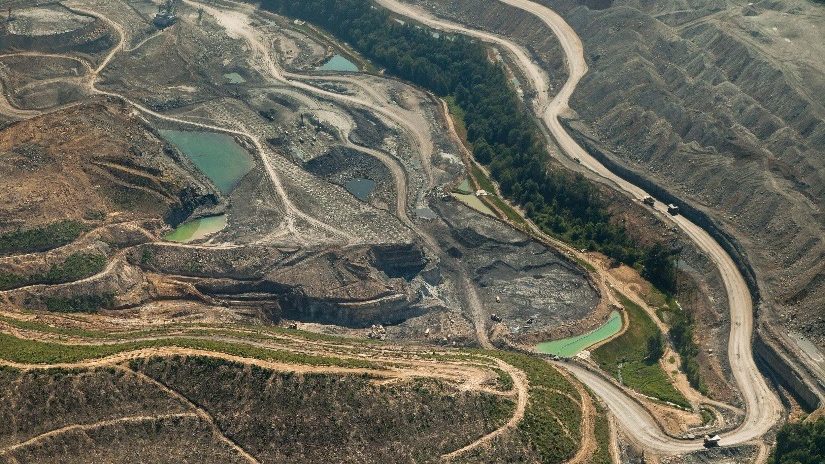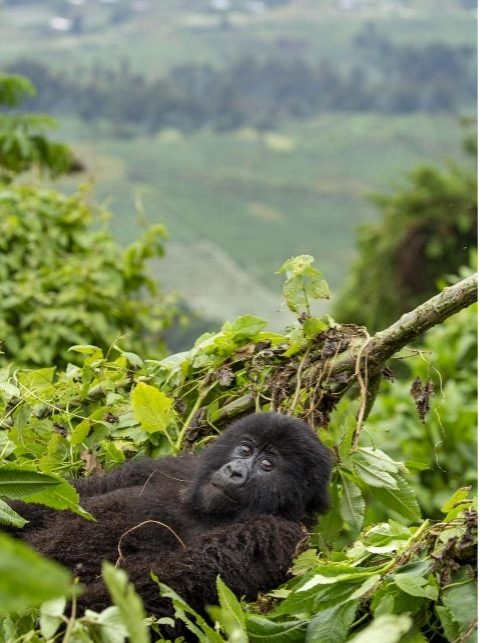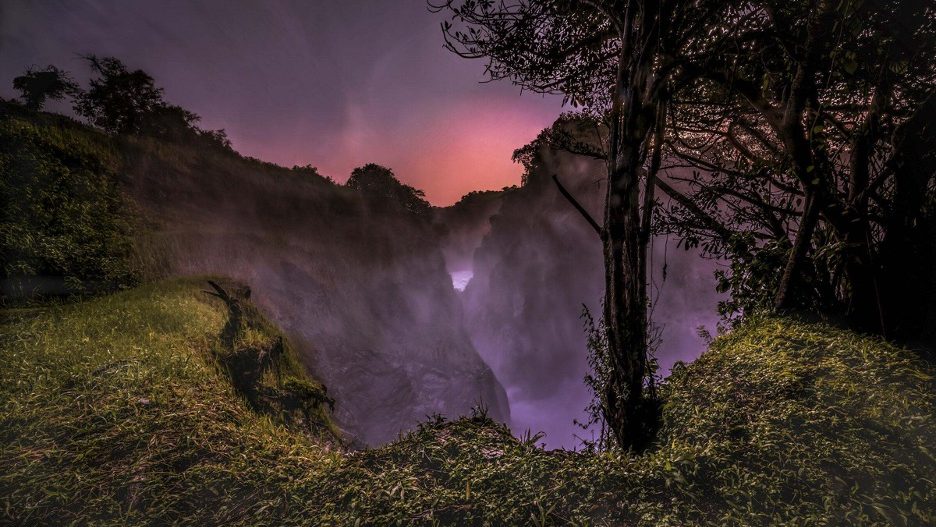How quickly can science make positive change in the world?
For more than a decade, the Science for Nature and People Partnership (SNAPP) has been doing just that. The most pressing issues for humanity and the environment need to catalyze expertise from around the globe. But whether academic and/or indigenous, government or private industry, these experts are busy and every second counts.
SNAPP solves this problem by creating space for transdisciplinary teams to come together in a facilitated retreat-like setting to use existing information to solve problems, and fast! Different challenge? Different team.
We explore just a few of SNAPP’s success stories below:
- Just Transitions from coal to renewables in Appalachia
- Conservation’s role in beating systematic poverty in Rwanda
- Injecting social equity into the global 30×30 conversation
Also, check out this video for more from SNAPP teams and leadership about how science creates impact for conservation and sustainable development.
Appalachian Coalfields
For decades the effects of a changing global economy have rippled through the coves and peaks of Appalachia. Changes in national energy generation profiles towards renewable and increasingly sustainable power sources have shifted the conversation in this region historically dependent on gradually retiring industries, now looking to embrace new solutions to thrive in the long term.
Through community-based programming, the SNAPP Central Appalachian Coalfields Working Group partnered with locals in the Central Appalachian Mountains to together develop problem-solving tools at the intersection of the manufacturing, tourism and service industries, and renewable energy development to support the communities in their transition from coal.
Partnering with local stakeholders, the team gathered ecologists, geographers, tourism specialists, community development practitioners, and passionate people came together to help forge a resilient path forward. Their goals envisioned a process of co-creation, working with the community instead of on its behalf, allowing for more long-term and impactful outcomes. The uniqueness of the region required a specialized approach.
Echoed by project partners was the strength in collaboration. “If there was a SNAPP reunion tomorrow, I would be there in a heartbeat,” shared Leslie Ferguson-Oles, Chief Advancement Officer for the Mountain Association and member of the SNAPP Appalachian Coalfields Working Group, “It was such a great experience to come together with such a variety of people, really having to wrestle through tough problems, and also having the time to build the relationships required to have those hard conversations.”
The results of the work from the Appalachian Coalfields Working Group, including a solar suitability model and analyses of financial wellness, have already influenced several projects throughout the Appalachian Mountains. The model helped mold The Nature Conservancy’s approach to solar energy development on the Cumberland Forest properties in Kentucky, Tennessee and Virginia, and other TNC-managed lands in the region. The team also released novel research on increasing the economic contribution of the sustainable forestry industry to the Central Appalachian economy without sacrificing the forests’ natural conservation value.
“It was so fulfilling to have been able to shift the conversation on how to talk about the problems that have been caused by extractive industries in this region, while still being respectful of the people who live here,” said Ferguson-Oles, “There are real challenges; it’s not that you’re trying to paint over what the problems are, but just the way we talk about those problems. That is so important.”
When asked what her SNAPP experience brought to mind, Ferguson-Oles shared, “Joy. And Fun. Beautiful work.”

Rwanda Natural Capital Accounting
Over 7,000 miles from the work of the Appalachian Coalfields team, the SNAPP Rwanda Natural Capital Accounting Working Group came together to reduce systemic poverty and sustain economic growth in western Rwanda through conservation.
“It has been demonstrated over the years that when there is a heavy rain season, we have flooding [in this region]. We have people dying as a result of landslides, and losing many, I mean, tons of soil as a result of soil erosion,” shared Michel Masozera, WCS Director of Policy and Partnerships for Africa, “People living there are displaced all the time. The crops they are growing are washed away by the water, by erosion. Based on that analysis, we said, ‘okay, how can we build the resilience to climate change, resilience for the ecosystem, as well as for the people living out there?’”
While the environment and natural resources of a region are central to its economic development and human well-being, their benefits are seldom recognized in policymaking. Traditional systems of national accounting typically only constitute market goods and services, and often fail to account for the impacts of a healthy environment on a country’s economic output.
Visit the SNAPP Website
SNAPP's expert teams deliver rapid solutions to the most critical challenges facing humans and our planet.
“We wanted to do kind of synthetics to understand the value of natural capital for Rwanda,” said Masozera, “It was a multidisciplinary team. We worked together… It would have been difficult to do that alone because it requires different sets of skills, like ecosystem service modeling, economic modeling, having biological data, social economic data. Putting all that in one framework to come up with some key recommendations… that was the added value of SNAPP.”
The team’s work was implemented through three sets of group activities: a tourism study of Nyungwe Forest National Park in west Rwanda, one of the oldest rainforests on the continent and the country’s largest tract of forest; an accounting of the ecosystem services provided by the region’s lands and waters; and several economy-wide impacts analyses of financing Rwanda’s national protected areas, ecosystem services and green growth strategies, and the Rwanda Vision 2020’s growth targets in the agriculture sector.
These analyses underscored the importance of the ecosystem services of the region, determining that western Rwanda held a critical carbon stock and served as an important watershed for the entire country. “Through the SNAPP working group, we realized that it was the most important part of the country to conserve and protect in order for the country to be resilient to climate change,” Masozera added.

The results of the study on Nyungwe Forest National Park were integrated into southwest Rwanda’s regional accounting matrix, which concluded that increasing national park fees for high-income foreign tourists could bolster the national economy, improve conservation, and aid continued peacebuilding. The team also developed a land-use allocation tool that accounts for economic responses to changes in land-use policy and created a framework to integrate natural capital into a system of national accounts. The work highlighted the importance of protected natural areas in safeguarding ecosystem services flows in Rwanda and constructed a baseline to inform development strategies that better link economic and environmental goals.
But, as Masozera put it, “conservation never ends, there are always new challenges.” With the results and growing momentum of their SNAPP Working Group project, it became clear that the work was not yet done. In fact, it had only begun. “That’s how the idea came up… You can publish in Science, you publish in Nature, but when you don’t take those recommendations, when you don’t put them into practice, you feel like it’s an unfinished job.”
In 2023, the Rwanda National Accounting team was awarded the prestigious $40 million Green Climate Fund award to continue their work building resilience within vulnerable communities in the face of climate change. The funds will be used over the next five years to implement the landscape restoration and community resilience initiative that the team designed as a SNAPP working group.
Social Implications of 30×30
In recent years, many governments, organizations, and companies around the world have aligned around a common goal to increase protected and conserved area coverage to 30% by 2030 (30×30). While this target will inevitably affect the global population, little research has been conducted into the social impacts that the initiative might have on communities, mostly due to a lack of effective dialogue between those with differing perspectives on area-based conservation. The Social Implications of 30×30 Working Group aims to narrow that knowledge gap by gathering a wide range of scholars and practitioners from many different areas of expertise to conduct an interdisciplinary investigation of the social impacts of 30×30, and how they might be addressed.
“The effective implementation of the 30×30 goal depends on understanding and integrating the social dimensions of area-based conservation, which requires collaboration among scholars and practitioners from various disciplines and perspectives, including voices historically underrepresented in conservation,” shared Javier Fajardo, a SNAPP Research Fellow helping to lead the working group. “Fostering this interaction was a core objective of the project, and both a strength and a challenge.”
Investigating the potential social impacts of 30×30 at a global level, the team takes into consideration the various scenarios for implementation, including an analysis of affected populations and possible variables such as wealth, ethnicity, and voice in decision making. Working closely with implementation partners in Uganda to create a more localized case study for the project allows the team to examine in further detail how 30×30 could be implemented at a country level in a way that maximizes social benefits while minimizing social harms.

“SNAPP’s support for transdisciplinary science and bridging the gap between global and local perspectives surely holds an important key to advancing our conservation endeavors,” commented Priya Shyamsundar, Lead Economist for The Nature Conservancy and working group member. “SNAPP’s true potential became evident to me while participating in a workshop that brought together researchers and practitioners from around the world…. Javier provided insightful initial analyses on integrating social considerations into global maps, which spurred a productive conversation on the critical need for illustrative case studies to fill gaps in global analyses. A team from Uganda employed Lego Serious Play to construct a systems model of conservation in their country, further grounding our discussions in the intricate realities of conservation.”
For an early-career scientist like Fajardo, participating in this working group has been an incredible learning experience, “SNAPP’s emphasis on bringing together experts from diverse fields in a working group to address complex conservation challenges is very compelling. Not only is it an opportunity to work on a project that aligns perfectly with my research interests, but I get the chance to do so within a dynamic and collaborative framework. It is exciting.”
One of SNAPP’s newest collaborations, the Social Implications of 30×30 Working Group has already made great strides, publishing early findings in Nature and being instrumental in the Kunming-Montreal protocol negotiations. The team is currently examining future opportunities to engage with collaborators around the world, including attending the United Nations Biodiversity Conference in Cali, Colombia this fall.
Conclusion
SNAPP aims to revolutionize science by quickly bringing rigorous, inclusive solutions to the problems facing humanity and the environment that need it most. Check out more teams and enjoy our video that celebrates over a decade of partnership!




Join the Discussion